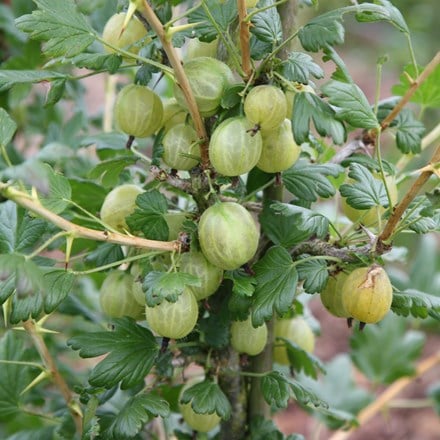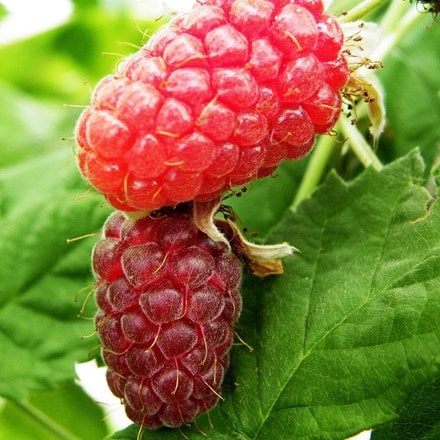goji berry
goji berry or Lycium barbarum
- 3 litre pot
- £21.99
- In stock (shipped within 2-3 working days)
- 2 + 1 FREE 3 litre pots
- £43.98 £14.66 each
- In stock (shipped within 2-3 working days)
Delivery options
- Standard £5.99
- Position: full sun
- Soil: moderately fertile, moist but well-drained soil, or loam-based compost for containers
- Rate of growth: fast
- Hardiness: fully hardy once established (some protection may be needed in its first winter)
Originating from the Himalayas and hailed as a super-food which can be used for boosting your immune system and cleansing impurities, the berries of this plant are said to be very high in vitamin C and iron.
This is a fast and easy to grow shrub, which produces white and purple, trumpet shaped flowers in early summer. These are followed by shiny red berries, which can either be eaten straight off the bush, or dried and eaten like sweet, mildly licorice flavoured treats later on.
This goji can also be grown in a good sized tub on a sunny patio, provided it is kept well fed and watered. They like to be well established before they start to produce fruit though, so it will usually take around 2 or 3 years to produce its first crop.
This is a fast and easy to grow shrub, which produces white and purple, trumpet shaped flowers in early summer. These are followed by shiny red berries, which can either be eaten straight off the bush, or dried and eaten like sweet, mildly licorice flavoured treats later on.
This goji can also be grown in a good sized tub on a sunny patio, provided it is kept well fed and watered. They like to be well established before they start to produce fruit though, so it will usually take around 2 or 3 years to produce its first crop.
Goji berry (Lycium barbarum) tolerates light shade but grows best in full sun and well-drained soil. Prepare the ground well before planting, digging in plenty of well-rotted manure. Plant at the same depth as in the pot and water thoroughly to establish. Each spring mulch with well-rotted manure and feed with a general purpose fertiliser (such as Growmore) to help retain moisture and add nutrients.
If growing in a pot, select a container with good drainage holes, use John Innes No. 2 potting compost with added grit/sharp sand). Feed fortnightly with liquid fertiliser (e.g. tomato feed).
Once established, keep well watered to encourage fruit development, avoid waterlogging. After establishment, prune in spring as new growth begins, removing weak or tangled shoots, but keep pruning light to ensure a good crop of berries.
If growing in a pot, select a container with good drainage holes, use John Innes No. 2 potting compost with added grit/sharp sand). Feed fortnightly with liquid fertiliser (e.g. tomato feed).
Once established, keep well watered to encourage fruit development, avoid waterlogging. After establishment, prune in spring as new growth begins, removing weak or tangled shoots, but keep pruning light to ensure a good crop of berries.




